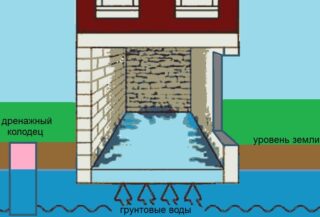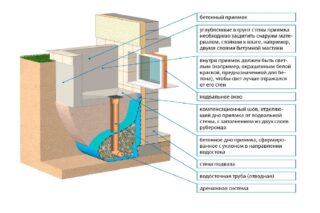Basement flooding is a common occurrence that occurs in holiday homes and residential buildings. Among the possible consequences: damage to the products stored in the basement, destruction of the foundation and other elements of the building. There are several ways to get rid of water in the basement of a private house. It is also important to identify the source of the problem and fix it.
What is the danger for the house
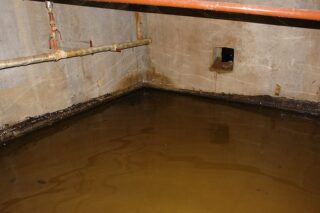
The need to fill up the cellar of a summer cottage or dwelling often arises when the level of groundwater is high. This factor can seriously affect an already erected structure. The following negative effects are possible:
- mold colonies appear in a damp room;
- products stored in the basement become unusable;
- water accumulating in rainy weather can easily wash away a garage or house, flood vegetation, wash out roads;
- corrosive components contained in groundwater act on the concrete base, which can impair its bearing qualities.
To avoid such problems, even before the start of construction, it is necessary to conduct a study of the soil for mobility, composition (amount of clay and sand), the level of the location of the waters. High-lying currents are considered, the distance between which and the surface of the earth is less than 2 meters. In such areas, it is better not to build residential premises.
The most accurate data will be obtained using geological exploration services. Based on its results, a site for construction, a foundation design and a drainage arrangement are selected.
You can determine the approximate location of the waters yourself. It will be indicated by the level of liquid in the well. It is better to determine the level in autumn or spring - during periods when the water rises higher due to heavy rains or melting snow. The presence of certain plants (horsetail, willow, reed, alder) also indicates a high occurrence.
Why is the basement flooded
The basement can be flooded for the following reasons:
- close occurrence of groundwater;
- accumulation of sediments with poor organization of the liquid drainage system;
- penetration of melt water in combination with the absence or poor-quality performance of drainage and waterproofing;
- breakthrough of pipes located in the room;
- cracking of the base of the structure (for example, due to non-compliance with the construction technology);
- accumulation of condensed moisture in the absence of ventilation.
If excess moisture is found in the room, it must be removed in an accessible way and the cause of the accumulation of fluid must be eliminated. After that, you can proceed to measures to prevent such incidents in the future.
How to remove water from the basement
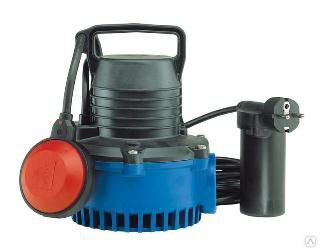
To get rid of excess moisture, you will need to purchase special equipment. For a one-time pumping of a small volume of water, a vibration pump is well suited. This device is affordable and easy to use, but it won't be enough for large-scale flooding or in cases where the liquid contains debris.
More effective with a significant accumulation of water will be the use of a drainage pump. They are submersible and outdoor.Models of the first type are immersed in liquid and remain there during the entire operation process. Outdoor units are installed so that the top is above the water and the bottom is submerged. The pump can be bought and operated by yourself, or you can order a service from a company that provides fluid pumping services.
How to isolate a basement from groundwater
Pit arrangement
It's easy to do it yourself. A cubic pit of about 1 cubic meter in volume is created in the middle of the room. A deepening is made in its center and a stainless steel bucket is placed there. The soil around him is tamped. The structure is laid out with bricks, a 2 cm layer of cement mortar is made on top and a lattice of iron rods is placed. The distance between the latter should be such that the water can be pumped out by the pump. Trenches are made in the pit and tiles are laid to form drains.
Drainage for drainage
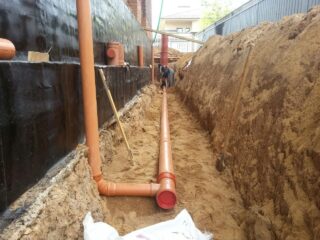
This is the most effective way to save the basement from further flooding. It is possible to fill up the basement under the house with water only after pumping out and installing drainage. There are several ways to organize it:
- wall-mounted - well suited for houses equipped with basements, settles down after creating a foundation;
- reservoir - organized when digging a foundation pit for a building;
- the method of digging a trench along the walls is suitable for an already operated building.
When choosing the last method, it must be remembered that the depth of the ditch should be 0.5 m greater than that of the foundation, and the width should be about 120 cm.On four sides of it, bends are made about 5 m long, at the ends of which grooves are created. Geotextiles are laid along the bottom of the ditch and a drainage corrugated pipe is mounted on it. Wells are installed after 7 m. After installing the pipe, the ditch is covered with gravel, and 0.1 m before the base of the house - with sand, and on top with coarse gravel. The latter is then poured with concrete mixture.
Backfilling the basement is best done with well-dried expanded clay. River sand and gravel are also suitable for this purpose. Sometimes broken brick is used as one of the components of the backfill.
If river sand is used, the first few seasons will have to be poured in, since it tends to sink under the influence of moisture. This option is good if there is a wooden floor in the basement without a concrete screed, and water penetrates into it in not too large volumes (up to 0.3 m above the floor). If the cellar is flooded to the very ceiling, sand filling is not worth it. A combination of broken brick with gravel or sand is better. These materials are laid in alternating layers. In this case, there should be a broken brick at the top.
Waterproofing
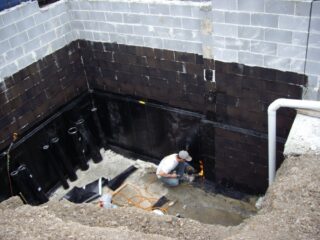
The room must be waterproofed from the outside and from the inside. The first task can be solved using two types of materials - roll and coating. A combination of them is often used: first, mastic is applied, and then the structure is pasted over with roll material in several layers.
For indoor work, impregnations are used that are applied directly to concrete. It is better to choose formulations with penetrating properties.
Sometimes, after such processing, the walls are plastered using a metal mesh.

